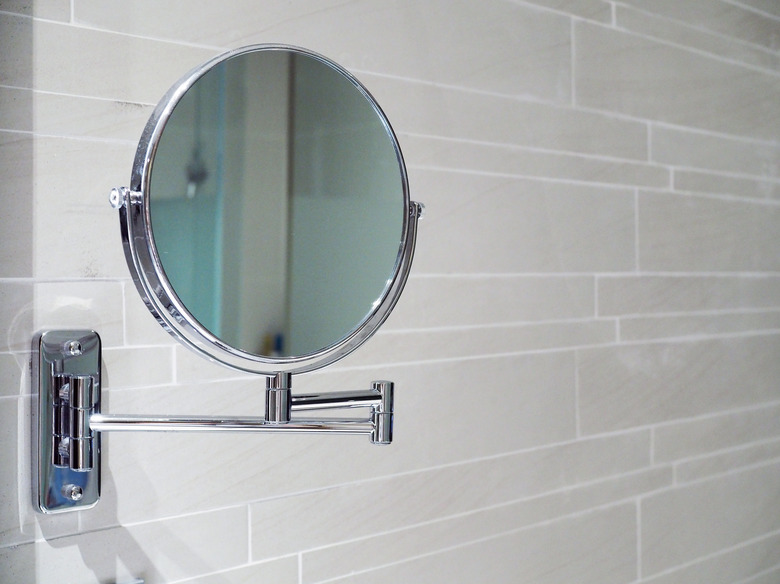How To Install A Wall-Mounted Makeup Mirror
We may receive a commission on purchases made from links.
Wall-mounted makeup mirrors are usually circular, although there's no rule prohibiting other shapes. They swivel out from the wall and are just large enough to allow you to see your entire face. Some models, such as the 8-inch Jerdon mirror, which is recommended by Jennifer Blair of the Chicago Tribune, have a two-sided mirror that swivels for a magnified view. Whether you choose a mirror with a swinging arm or one with a fixed arm, you want to install it straight or it will look out of place and be more difficult to use.
Choose a Good Location
Choose a Good Location
Most people want the mirror to be as close to the sink as possible, which means affixing it to the wall close to the side of the existing wall mirror or medicine cabinet. If you'll be using it primarily while standing, InStraight recommends placing it from 54 to 60 inches above the floor, and if you'll be sitting, it should be 37 to 44 inches from the floor. If the mirror has a light, you have to install it near a receptacle so you can plug it in.
Most mirrors come with all the mounting hardware you need, including a mounting bracket, screws and wall anchors, but it's best if you position the wall anchor in front of a stud so you don't have to use the wall anchors. The plastic conical anchors that typically come with mirrors have a habit of working themselves out from the wall when you repeatedly swing the mirror. If there's no stud within a reasonable distance of your preferred location, consider replacing the conical anchors provided with more robust ones, such as plastic toggle anchors.
Conical anchors are fine if you're installing the mirror on a tile wall because they hold well in tile. In fact, they hold so well that you don't even have to worry about finding a stud.
Install the Mounting Plate
Install the Mounting Plate
Once you've selected a location, separate the mounting bracket from the base of the mirror arm, hold it against the wall and level it with a torpedo level, then mark the two screw holes with a pencil. Drill a pilot hole on each mark using an appropriate drill bit. If you're drilling through tile, you'll need a 3/8-inch masonry bit, which is large enough for conical anchors, and if you're using toggle anchors in drywall, you'll need a 1/2-inch wood boring bit. Otherwise, use a 3/16-inch wood bit to drill into the studs.
When installing anchors, insert them into the holes, set the mounting plate against the wall and drive the provided screws into the anchors. When mounting into studs, you don't need to install anchors. Just hold the plate on the wall and drive the screws into the studs as demonstrated by Weekend Handy Woman. Be sure to wear goggles to protect your eyes when drilling into anything.
Mount the Mirror
Mount the Mirror
Once the mounting bracket is secured to the wall, the job is almost complete. All that's left to do is set the base of the mirror on the bracket with the two threaded posts sticking through the holes and screw on the mounting nuts that come with the mirror. If the mirror has a light, plug it in, and it's ready for use.
